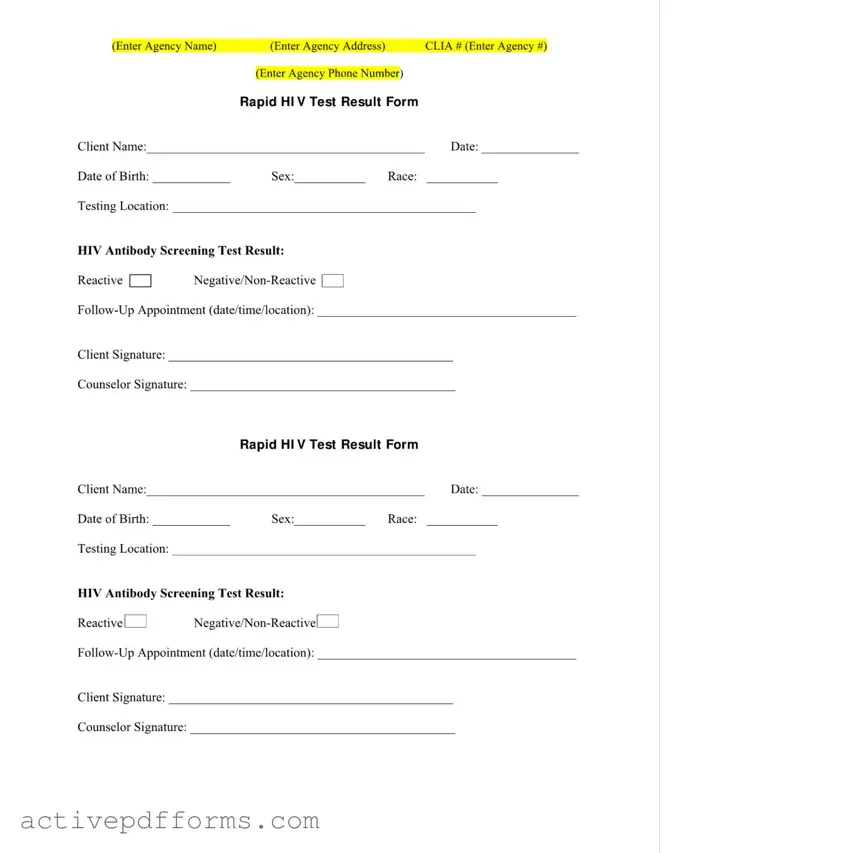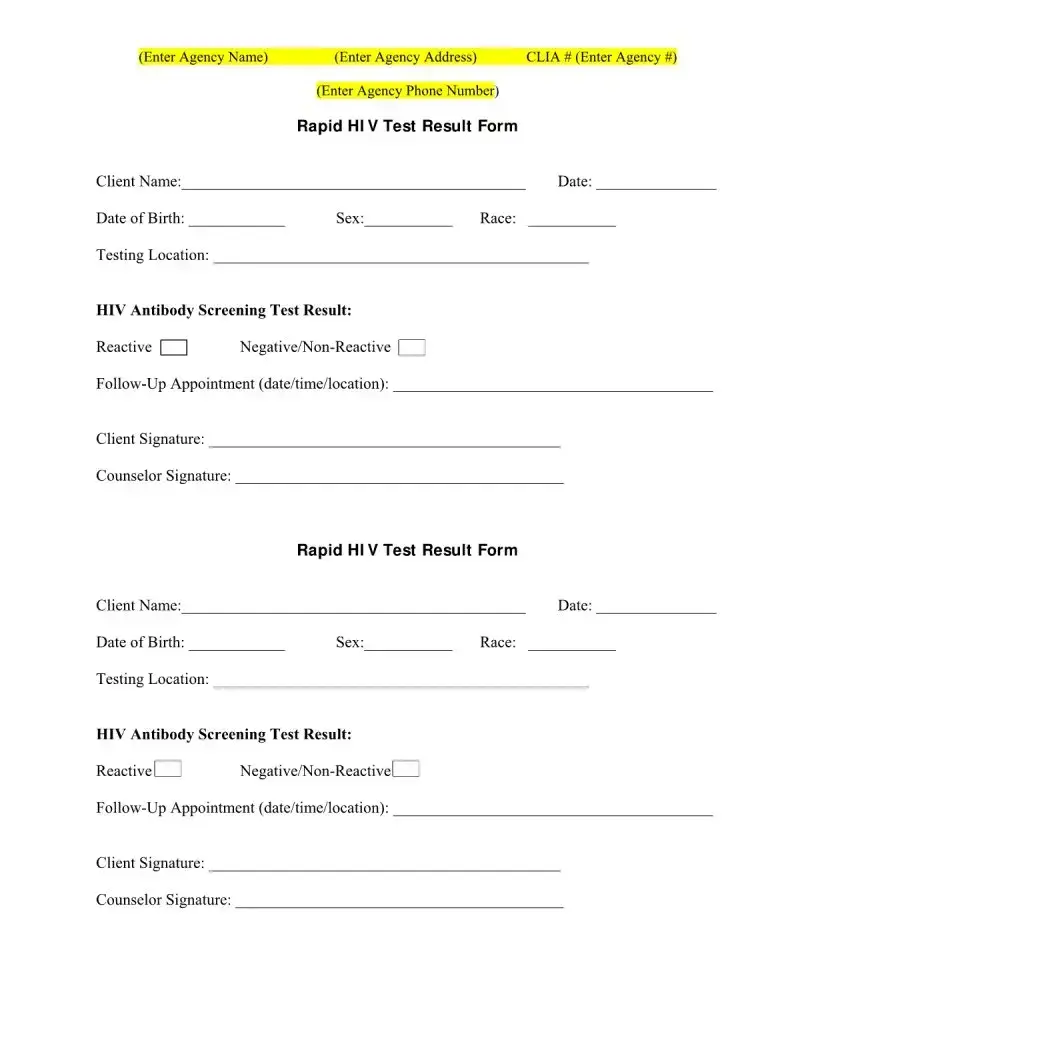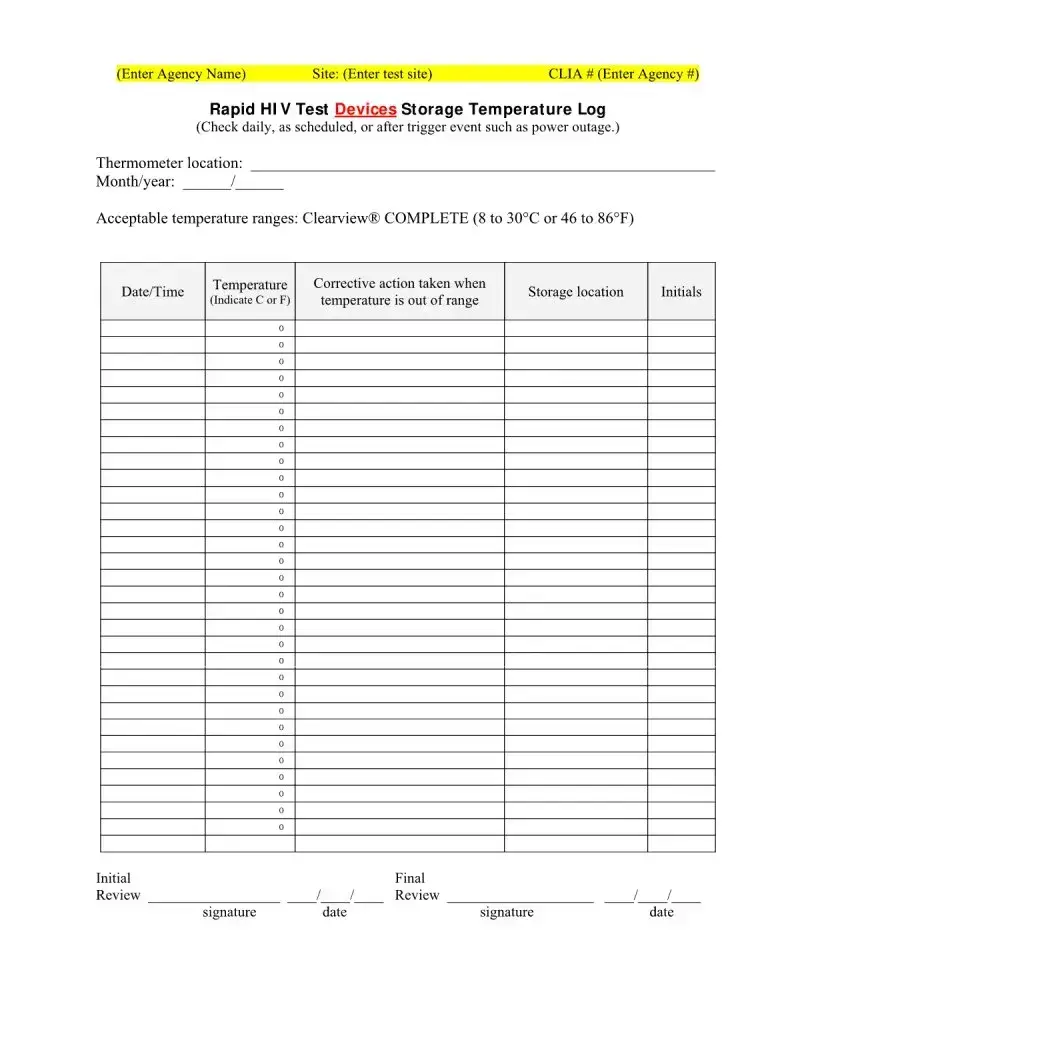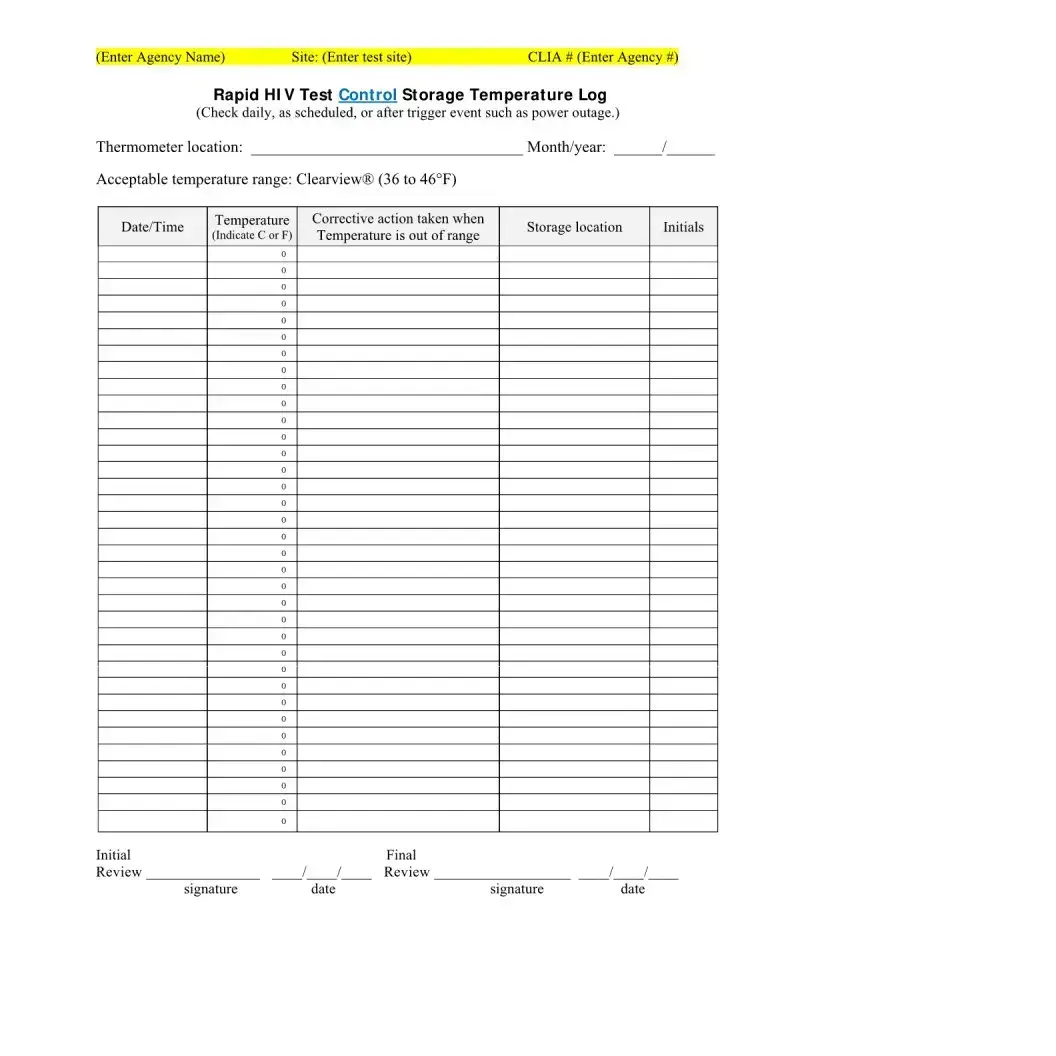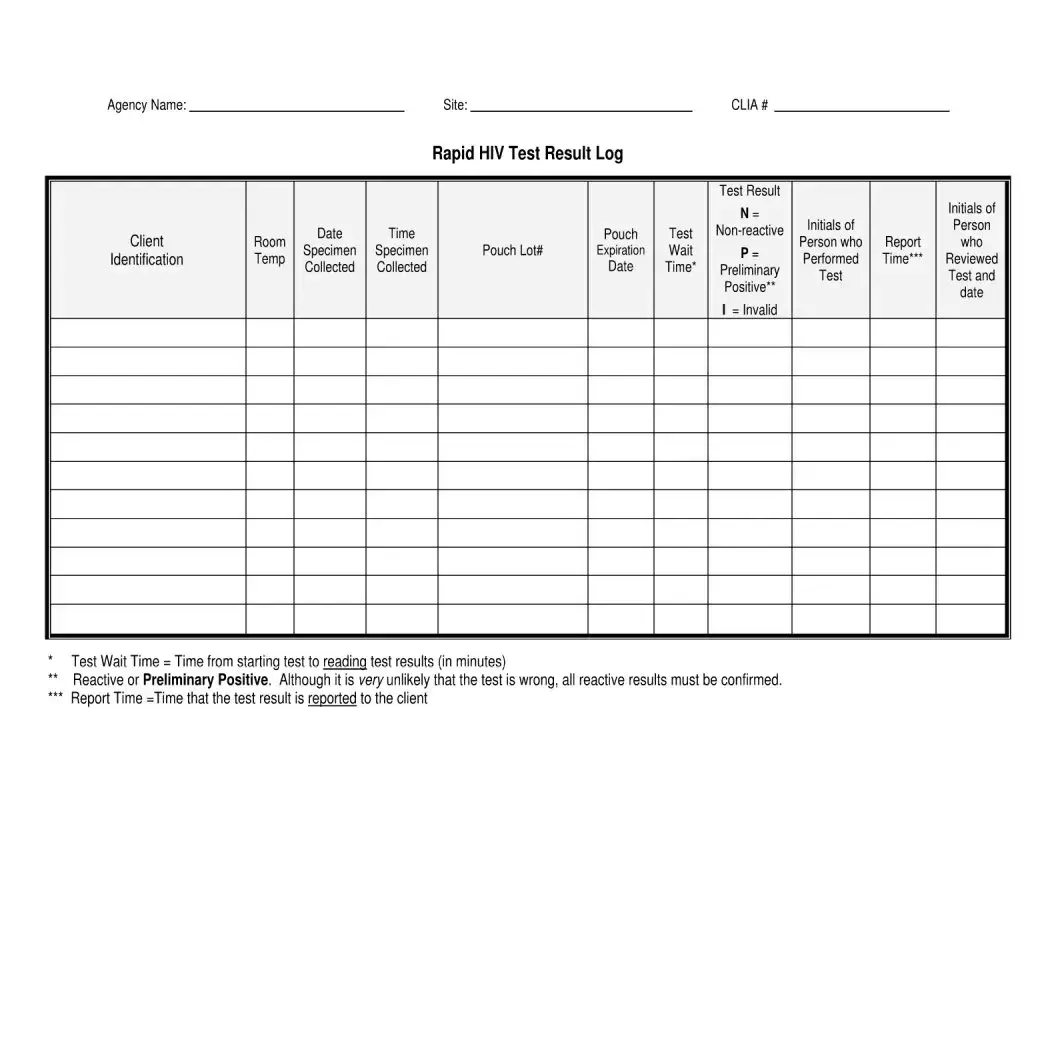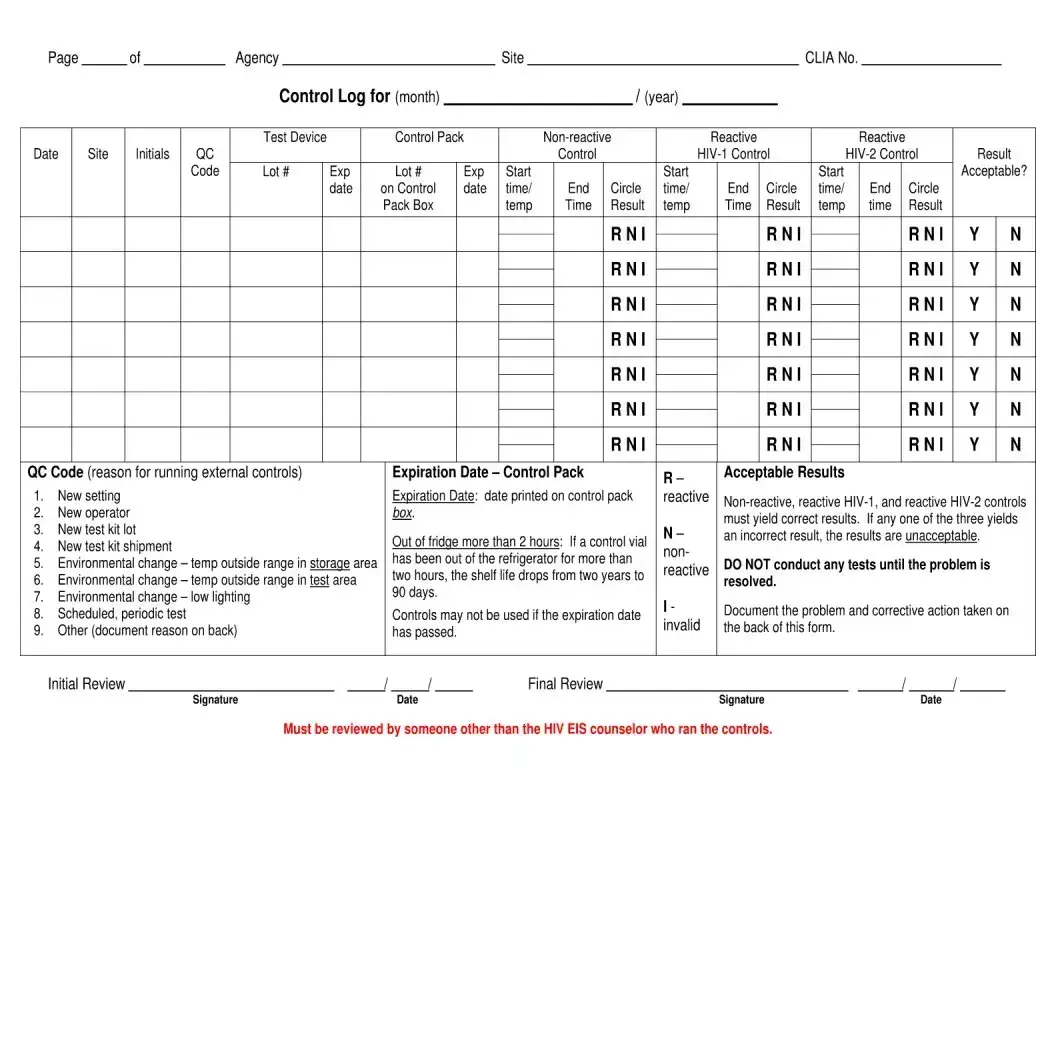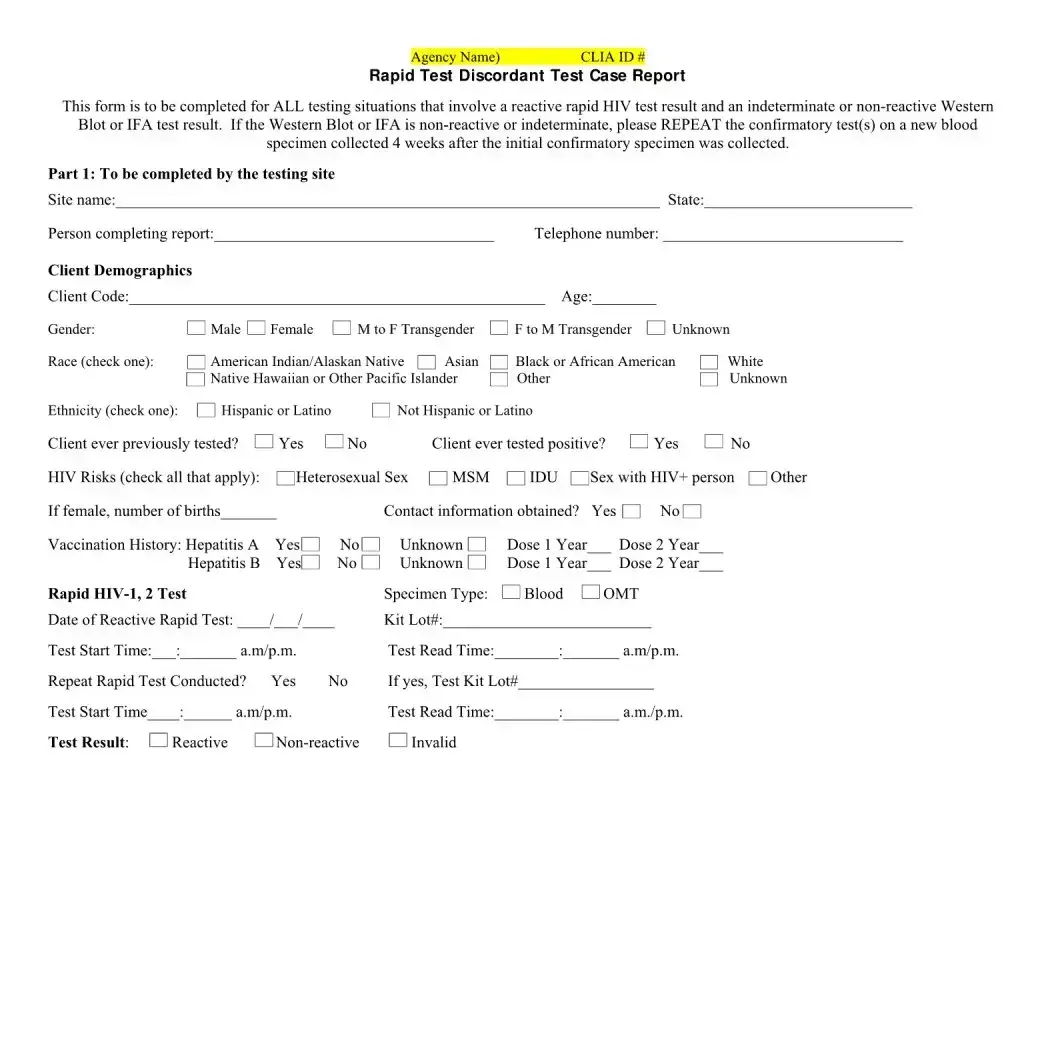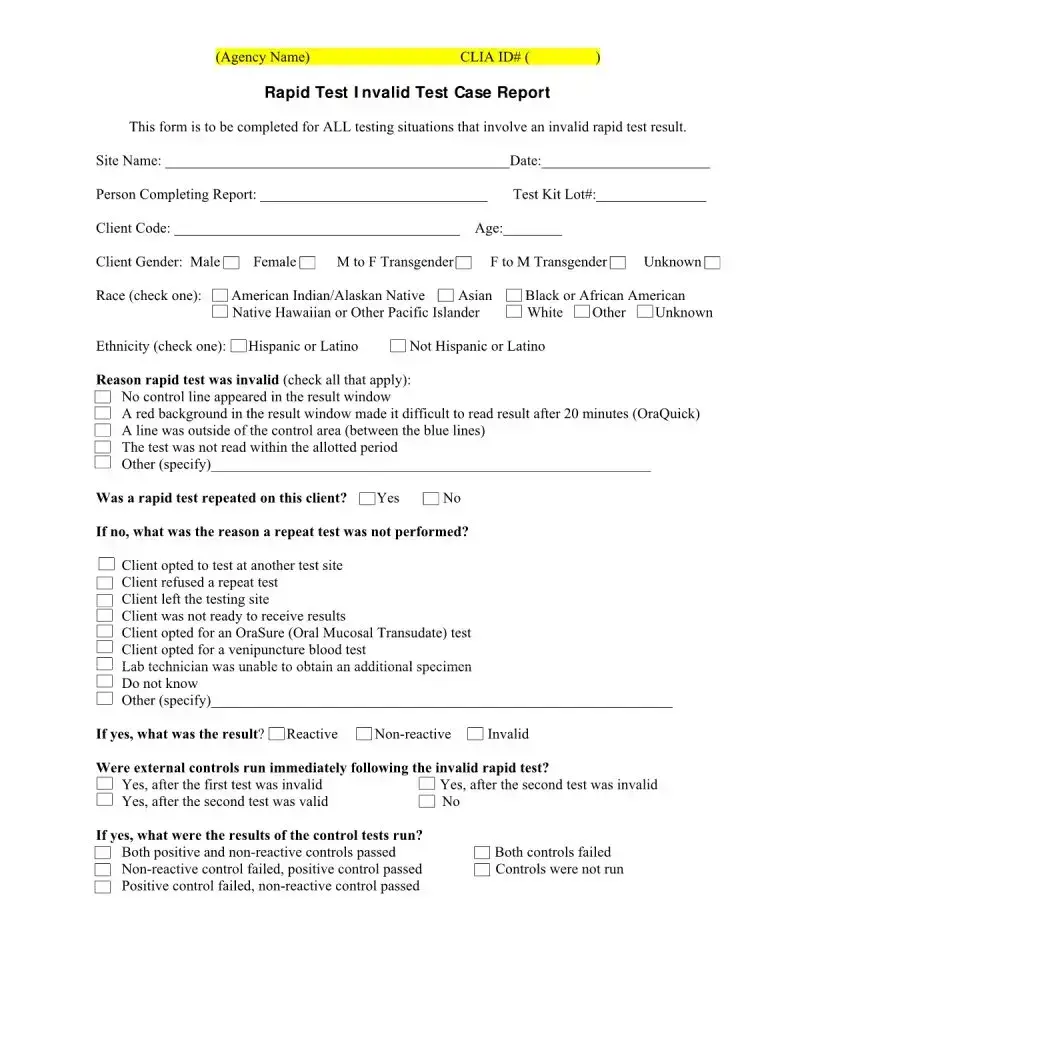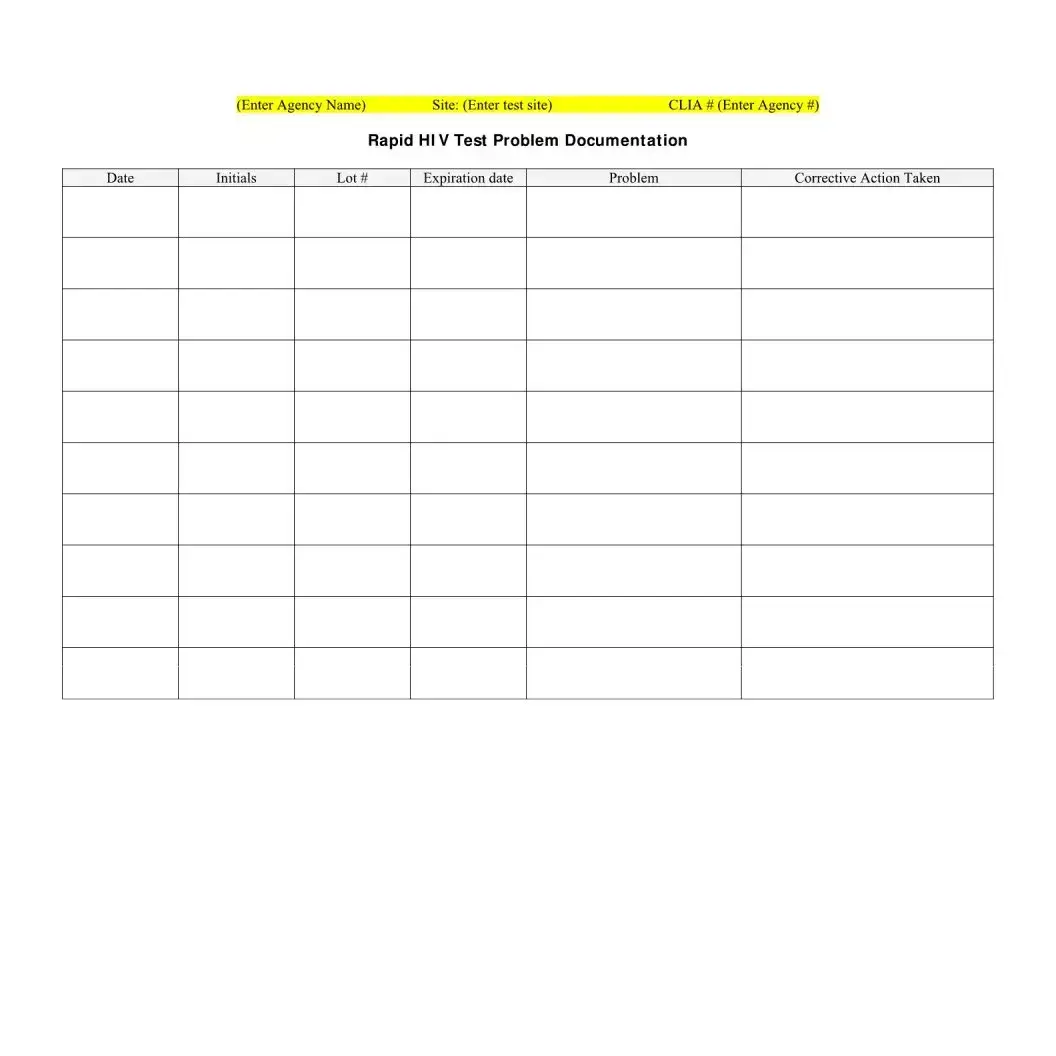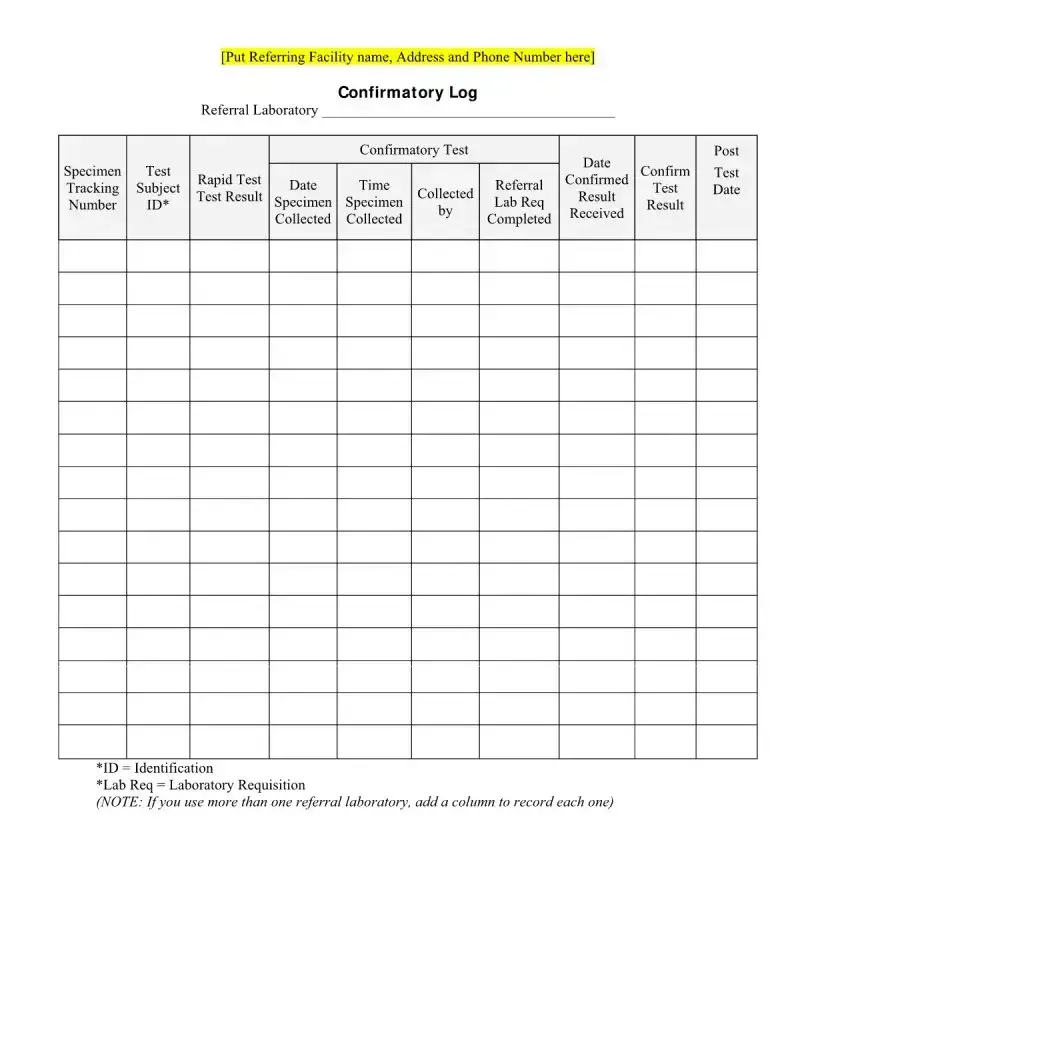In the realm of healthcare and diagnostic testing, the Negative HIV Test Form stands as a critical document, serving multiple essential functions from reporting test results to ensuring quality control in the testing process. Crafted for use by various agencies and healthcare providers, this form includes sections for entering agency details, client information such as name, date of birth, race, and testing location, alongside the crucial HIV Antibody Screening Test Result, which clearly marks the outcome as either Reactive or Negative/Non-Reactive. Follow-up appointment details are duly noted, ensuring a continuum of care. Additionally, the form encompasses sections for Rapid HIV Test Result Logs and Temperature Logs for both test devices and control storage, highlighting the rigorous standards maintained for test accuracy and reliability. These logs not only track the temperature conditions of the test and control storage environments but also detail corrective actions taken when necessary, underscoring the meticulous attention to ensuring test integrity. Signature fields for both the client and the counselor are included, underscoring the form's role in fostering transparency and trust between healthcare providers and clients. The comprehensive nature of this form exemplifies the multifaceted approach required in managing and communicating HIV test results, reflecting the nuanced intersection of healthcare, patient privacy, and quality control.
